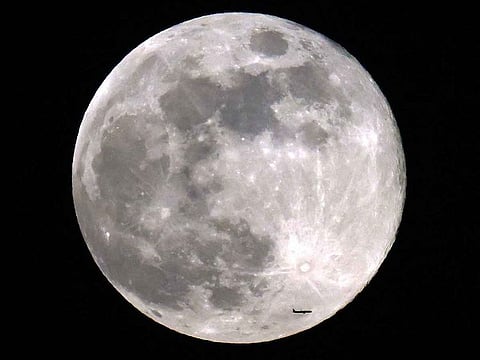Beaver moon: November's celestial spectacle lights up the winter sky
The lunar phenomenon against the bright backdrop of stars and planets explained

As sunlight dwindles in November, it's time for winter nights to shine - literally. Stargazers can see the penultimate full moon of the year early this week, commonly known as the "beaver moon," against a bright backdrop of stars and planets.
November's beaver moon appeared around 4:16 am Eastern on Monday; it will appear nearly full in upcoming days as it begins to wane. The moon can be spotted near Jupiter, which looms slightly bigger and brighter in the western sky this month to us as Earth moves between the Sun and Jupiter. Venus, in the eastern sky, and Saturn, near Aquarius, Pisces and Capricornus, will also be visible.
The moon shines against a brighter evening sky during this time of the year as well. Overall, the winter stars should also appear brighter because the position of the night sky, according to EarthSky. The sky now faces away toward the outskirts of the Milky Way (as opposed to the center of the galaxy like in the summer), looking toward our spiral arm of the galaxy and enormous stars. The night sky should appear sharper and clearer than in the summer, clouds permitting.
Why is it called the 'beaver moon'?
The "beaver" moon moniker, passed down from Native American lore, corresponds to the time of the year when beavers are more active. The light of the full moon helps guide the nocturnal animals to build and repair dams and dens before they enter hibernation. City dwellers in Washington, DC, can witness the work of at least one busy beaver chomping on cherry trees near the Jefferson Memorial in recent weeks.
The moon is also sometimes known as the "frost moon" because frost and early snow often begin this time of year, particularly in northeastern North America. In pagan tradition, it is referred to it as the "mourning moon" and symbolizes letting go of past troubles and looking forward to a new season and year.
What is the best moment to see the moon?
The best time to see the moon is when it is low on the horizon, such as around moonrise or moonset. Here, the moon may appear in vibrant colors, like orange or yellow, due to scattering of light in our atmosphere - in the same way we see various colors in sunrises and sunsets.
When the moon is lower on the horizon, the pathway from the moon to the ground is lengthened. The moonlight then has the ability to hit more molecules in the air. The air molecules scatter shorter blue and purple wavelengths from our vision, but allow longer orange and red wavelengths to pass more freely to the ground.
Is the moon bigger at the horizon?
The moon may also appear larger when it is closer to the horizon, but don't be fooled - it's an illusion. To debunk the myth yourself, take a photo of the full moon when it's near the horizon and when it's higher in the sky on the same night and using the same zoom settings. The diameters of the moon in both photos should be more or less the same.
The phenomenon, which NASA calls the Moon Illusion, is a trick that our eyes and brains play on us that makes the moon appear larger when it's rising and setting. The effect has been seen for thousands of years, including from astronauts in orbit. Some say our brains don't understand that the Moon's distance doesn't change in a given night or that objects in the foreground may trick us, but NASA says there's no definitive explanation.
Sign up for the Daily Briefing
Get the latest news and updates straight to your inbox



